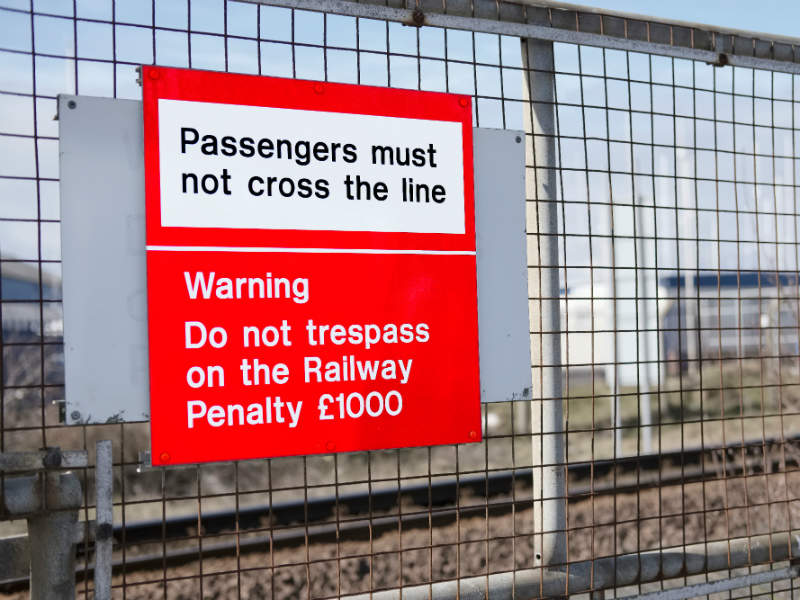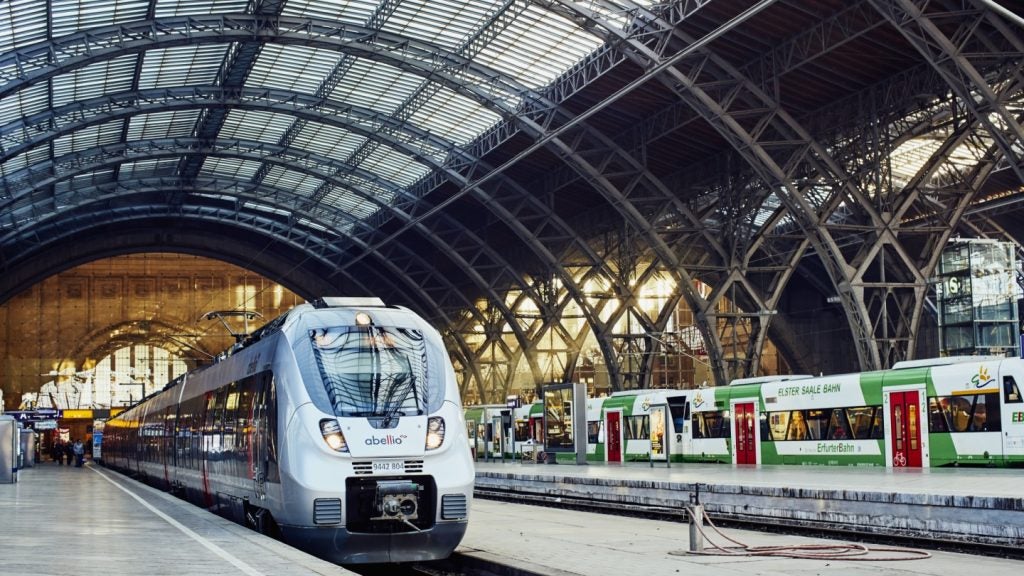
When teenager Tom Hubbard trespassed onto a nearby railway line in Rugby to retrieve a football, it was a decision that would change his life forever.
Egged on by friends, Hubbard climbed atop a freight train. That momentary thrill was immediately supplanted by a jolt of 25,000 volts surging through his body when the youngster came into contact with overhead power cables.
Hubbard suffered third degree burns across 57% of his body. Four years on, the physical and mental impact of the incident is immeasurable, having turned an outgoing teenager into an introvert afraid to show his scars.
It’s a cautionary tale that forms the centrepiece of a new campaign by the British Transport Police (BTP), You Vs Train, informing young people of the dangers of trespassing on the lines. Hubbard is the face of the campaign, which is based around a short film that re-enacts the incident, and is to play in British cinemas this summer.
Such a drive is timely. In June, three young graffiti artists were killed by an out-of-service passenger train near Loughborough Junction station in south London. According to the latest railway safety data, cited by Network Rail, one teenager risks their life on the tracks every four hours. The number of young people putting themselves in unnecessary danger has shot up by 80% in the last five years.
As depressing testament to this, seven people under the age of 18 have died in the last year alone.
How well do you really know your competitors?
Access the most comprehensive Company Profiles on the market, powered by GlobalData. Save hours of research. Gain competitive edge.

Thank you!
Your download email will arrive shortly
Not ready to buy yet? Download a free sample
We are confident about the unique quality of our Company Profiles. However, we want you to make the most beneficial decision for your business, so we offer a free sample that you can download by submitting the below form
By GlobalDataNew figures demonstrate lack of awareness
What is at play here is a fundamental lack of awareness. The Network Rail survey revealed that 15% of 13 to 18 -year-olds thought it was safe to walk on a railway track if there was no train in sight. 54% of respondents didn’t consider sidings (low speed track running alongside the main line) to be dangerous.
Trespassing on the tracks isn’t just limited to teenage derring-do either. The aforementioned data does not account for railway deaths recorded as suicides, as well as level-crossing incidents.
Along with greater awareness, security needs to be better, too, a spokesperson from the Office of Rail and Road (ORR) explains.
“We expect duty-holders to take reasonable, practicable precautions to install, maintain and improve security on the network,” says the spokesperson. “Where they fail to take adequate precautions to prevent trespass, we will investigate and take formal enforcement actions.”
The ORR is currently investigating the death of Harrison Ballantyne, an 11-year-old boy who died after sustaining electric burns at Daventry International Rail Freight Depot.
“The Chief Inspector has formally written to every freight operator demanding that they focus their attention on this area of risk to ensure that suitable steps are taken to prevent similar occurrences,” confirms the spokesperson.
The BTP’s National Disruption Fusion Unit has also worked with Network Rail and train operators in a bid to identify hotspots around the network and changes that need to be made. According to the groups’ investigations, 72% of trespass incidents between February 2017 and February 2018 took place within 100m of a train station; 57% occurred within 50m.
As the BTP and Network Rail continue to weigh up the impact of mitigation measures, such as improved fencing, it’s worth asking the question: Why do people trespass on the lines? According to the ORR, “Contributory factors include anti-social behaviour; drugs and alcohol; fare evasion; graffiti; and short cuts. Deprivation has also been identified as a contributory factor”.
Heightened security not likely to deter graffiti artists
As far as graffiti goes, Dr Theo Kindynis, a lecturer in criminology at Goldsmiths, University of London, isn’t so sure heightened security measures will deter artists; rather, it could have the opposite effect.
“While graffiti writers do take steps to minimise these dangers, it is important to recognise that the subculture is one that challenges and even celebrates its illegality,” he says.
“Within this context, heightened security measures and harsher legal penalties often only serve to add to the thrill of graffiti. Furthermore, the dangers posed by electrified rails and cables, moving trains, and palisade and razor wire fencing are heightened when writers are pursued by railway security or transport police.”
The BTP’s new campaign aside, Kindynis suggests rail authorities would also do well to avoid the vilification of trespassers. In the immediate wake of the Loughborough Junction deaths, Brian Cooke, a former board member of Transport for London, infamously branded the graffiti artists as “common scum criminals who cost the railway millions and keep fares high”.
“I am aware that many railway professionals and enthusiasts share the sentiments expressed by Cooke,” Kindynis says. “To them I would say: graffiti will never die. It has existed for millennia. The transport authorities have spent countless millions of pounds and buckets of paint trying to erase it: they have failed. That money would be better spent elsewhere.”
In the classroom: making tragedy preventable
That might be debatable, but in the meantime the BTP and train operators are working together to roll out a new schools engagement programme, through which community engagement managers will be stepping into the classroom to talk about railway safety. According to the BTP’s website, “officers will be stepping up patrols across the country”, too.
The BTP and Network Rail are right to attempt to take charge and deter trespassing, and the classroom is a good place to start. Putting up new fencing is one thing, but awareness is the ultimate key to prevention.





